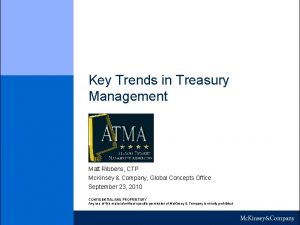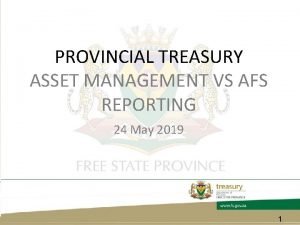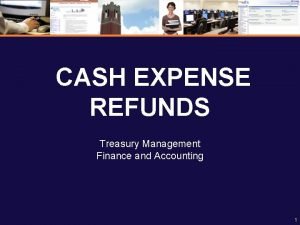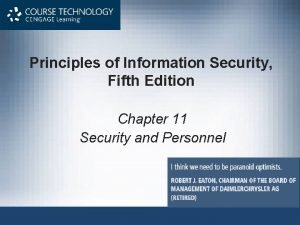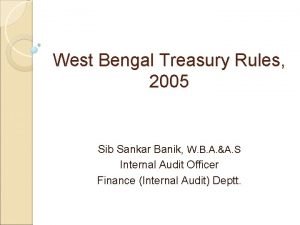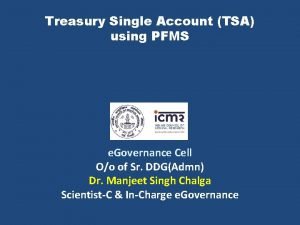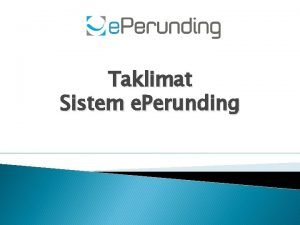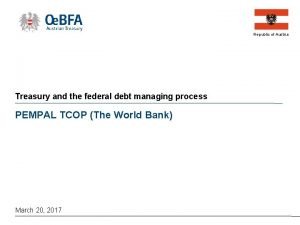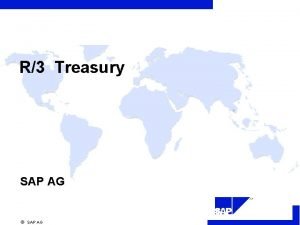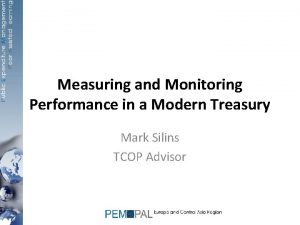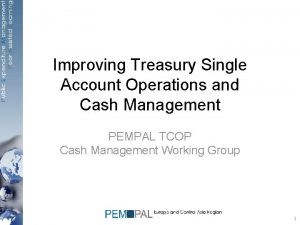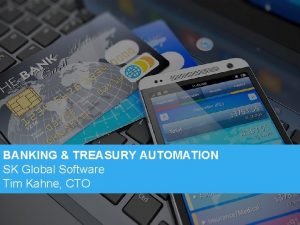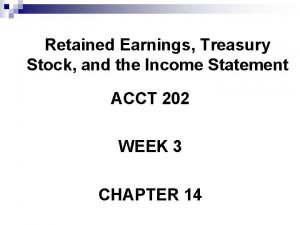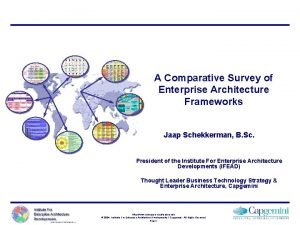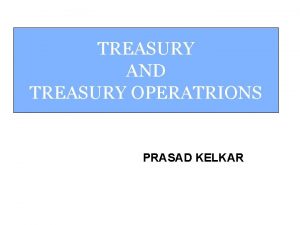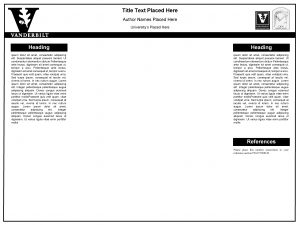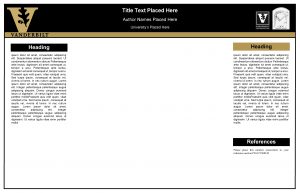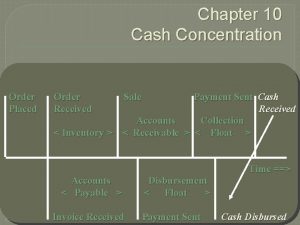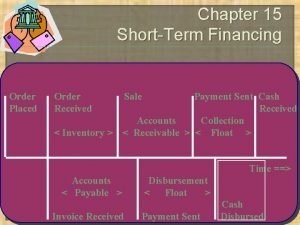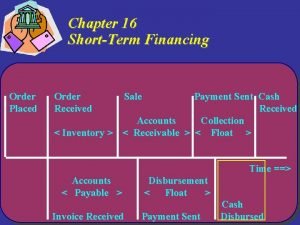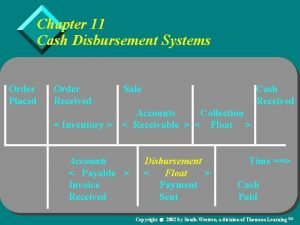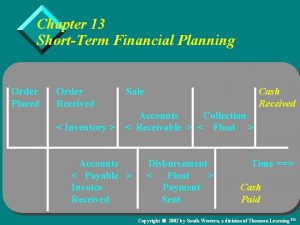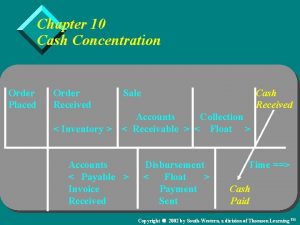Chapter 19 Treasury Information Management Order Placed Order
















- Slides: 16

Chapter 19 Treasury Information Management Order Placed Order Received Sale Payment Sent Cash Received Accounts Collection < Inventory > < Receivable > < Float > Time ==> Accounts < Payable > Invoice Received Disbursement < Float > Payment Copyright Sent 2005 Cash Disbursed by Thomson Learning, Inc.

Learning Objectives v Appreciate the benefits of e-commerce. v Understand what EDI is and the issues involved in its implementation. v Understand the benefits of applying the Internet to e-commerce. v Understand how treasury managers use information technology to make better financial decisions. v Understand the benefits of process outsourcing and benchmarking. Copyright 2005 by Thomson Learning, Inc.

Key Information Flows Strategic Level Management Level (analysis and decision support) Operations Level (data and value flows) Copyright 2005 by Thomson Learning, Inc.

Treasury Information Management Objectives v Information availability v Information accuracy v Information timeliness v Information system cost v Automation of information generation, transmission, analysis, and decision making v Electronification of information and payment systems Copyright 2005 by Thomson Learning, Inc.

Electronic Commerce v EDI and the current system – Benefits and costs of EDI v Company-to-Bank EDI v Electronic Funds Transfer (EFT) v EDI Communication Formats v Benefits of and problems with EDI Copyright 2005 by Thomson Learning, Inc.

EDI Communications Formats, ASC X 12 Standards v 810 Invoice v 820 Payment order/remittance advice v 821 Financial information reporting v 822 Customer account analysis v 823 Lockbox information v 824 Application advice v 828 Debit authorization v 832 Price/sales catalog v 835 Health care claim payment/advice Copyright 2005 by Thomson Learning, Inc.

Format Options for Funds Movement, NACHA v PPD: Direct deposit v CCD: Cash concentration and disbursement v CCD+: Same as CCD with addendum space v TXP: For express purpose of electronic tax payments v CTX: Corporate trade X 12 format with variable data fields v RCK: Re-presented check entries format v ARC, POP, WEB and TEL Copyright 2005 by Thomson Learning, Inc.

How Transaction Sets and Payment Formats Are Used at GM FOCUS ON PRACTICE General Motors’ divisions transmit remittance instructions using the ASC X 12 820 format to their banks. The banks convert the 820 transmission into the CTX format, which includes both payment instructions, dollars, and invoice remittance data. At this time, not all banks can handle a CTX format. If the supplier’s bank cannot handle such a format, GM’s bank will send the payment instructions in a CCD format and will then route a printed report of the remittance data to the supplier. Copyright 2005 by Thomson Learning, Inc.

Benefits and Problems with EDI v Benefits – improves quality of services to customers – employee productivity is enhanced – operations are streamlined – EDI provides for more effective asset management – EDI can improve payables area – cash management costs are reduced – banks often allow for larger credit lines v Problems – development and acceptance of standards – data communication security – legal issues Copyright 2005 by Thomson Learning, Inc.

E-Commerce and the Internet v Information reporting v Transaction initiation v Image access v E-Procurement v Internet invoicing and payment v Digital marketplaces v Future role of the Internet Copyright 2005 by Thomson Learning, Inc.

Auditing the STFM Information System v Survey results v Cash flow timeline events v Assessing the treasury management workstation v Assessing the Enterprise Resource Planning System Copyright 2005 by Thomson Learning, Inc.

Cash Flow Timeline Events v Purchasing v Accounts payable v Inventory v Sales v Receivables v Treasury v Financial administration Copyright 2005 by Thomson Learning, Inc.

Assessing Financial Administration v Four basic areas to assess – cash positioning/mobilization – bank relationship management – short-term investment/borrowing – treasury systems management v Each area assessed on 6 key elements – level of productivity – use of advanced strategies/automation – effective internal controls – performance measurement standards – involvement in cash-related decisions company-wide – industry reputation Copyright 2005 by Thomson Learning, Inc.

Assessment of Treasury Management Workstations v Balance reporting module v Bank information v Cash mobilization v Consolidation of information v General investment module v General debt module v Communications and system features v Vendor services and support Copyright 2005 by Thomson Learning, Inc.

Assessing ERP Systems v ERP systems are comprised of software programs which tie together all of an enterprise’s various functions. v A new competitor: ASP offerings – a web-based treasury information services offered over the Internet with quick and low cost implementation, or – a hosted Treasury Management System which has the flexibility, integration, and cost structure of an installed ERP system Copyright 2005 by Thomson Learning, Inc.

Summary v The chapter discussed the application of e- commerce through the electronic data interchange format and EFT. v We documented the dramatic effects of the recent application of the Internet as a system used in ecommerce and internal treasury information applications. v The chapter concluded with a variety of check lists for auditing the short-term financial management systems. Copyright 2005 by Thomson Learning, Inc.
 Treasury management best practices
Treasury management best practices Trends in treasury management
Trends in treasury management Asset management framework national treasury
Asset management framework national treasury Uf treasury management
Uf treasury management Is a cornerstone in the protection of information assets
Is a cornerstone in the protection of information assets 1st order 2nd order 3rd order neurons
1st order 2nd order 3rd order neurons Treasury rules 2005
Treasury rules 2005 Treasury
Treasury Tsa in pfms
Tsa in pfms Eperunding tender
Eperunding tender Treasury report example
Treasury report example Sap treasury workstation
Sap treasury workstation Treasury key performance indicators
Treasury key performance indicators Treasury single account meaning
Treasury single account meaning Treasury automation
Treasury automation Retained earnings treasury stock
Retained earnings treasury stock Extended enterprise architecture framework
Extended enterprise architecture framework

